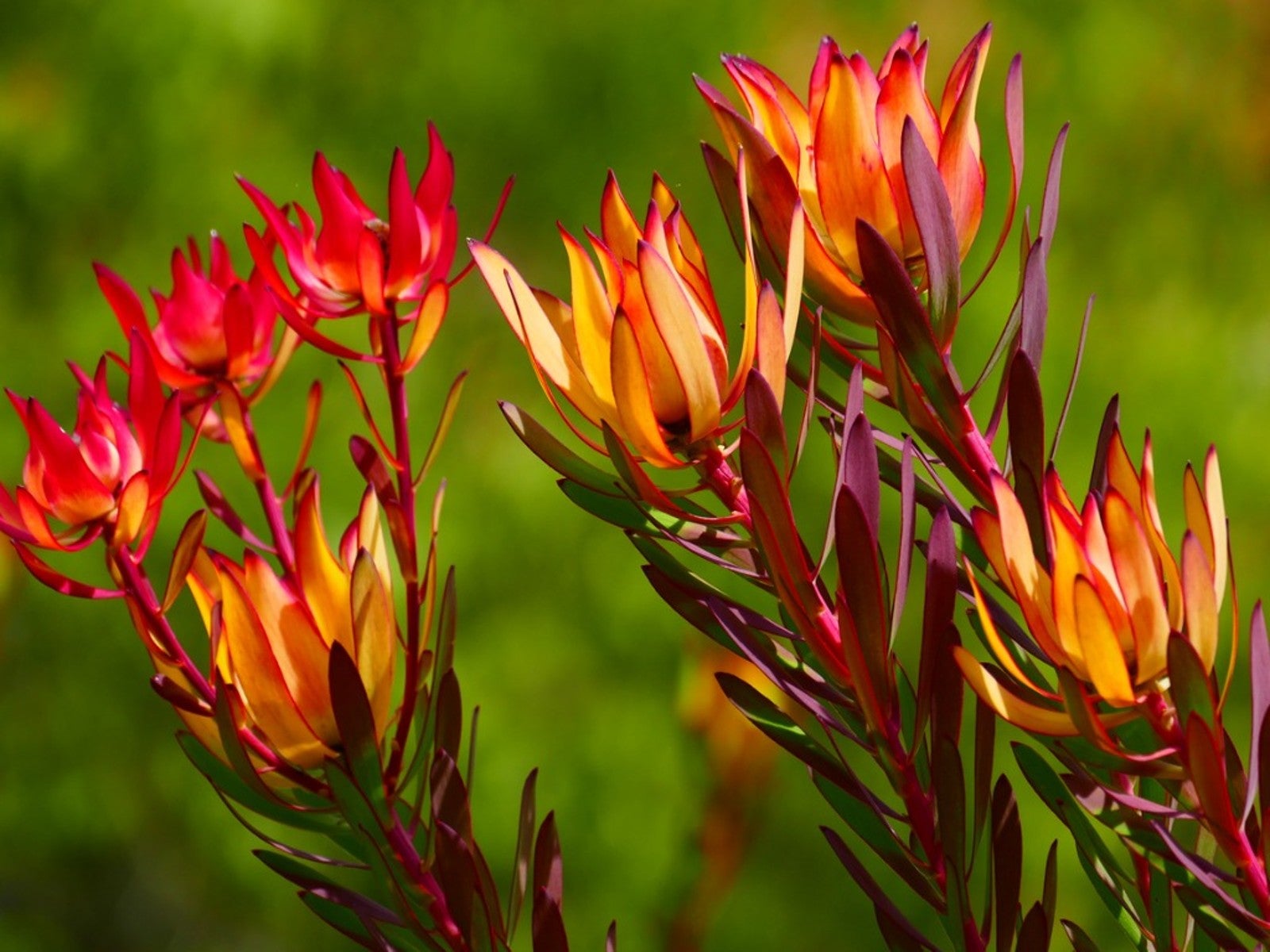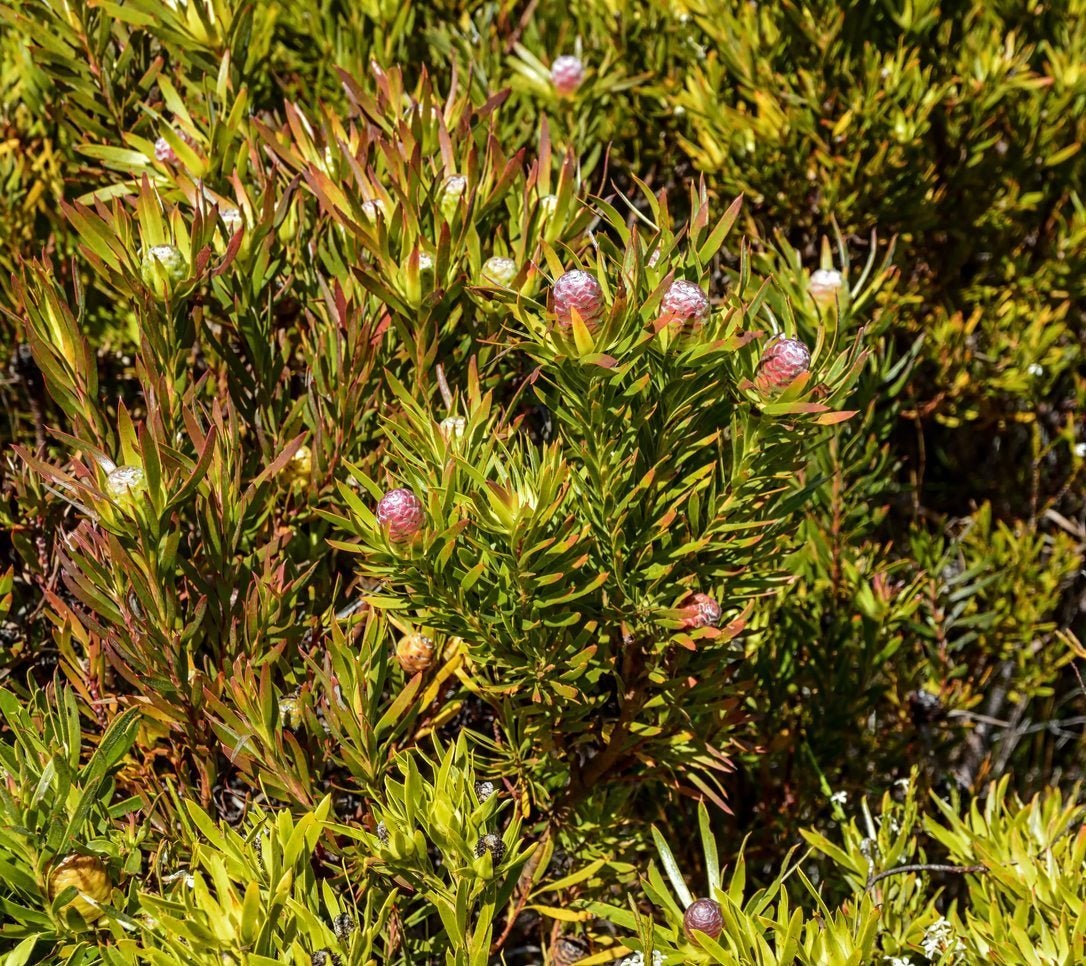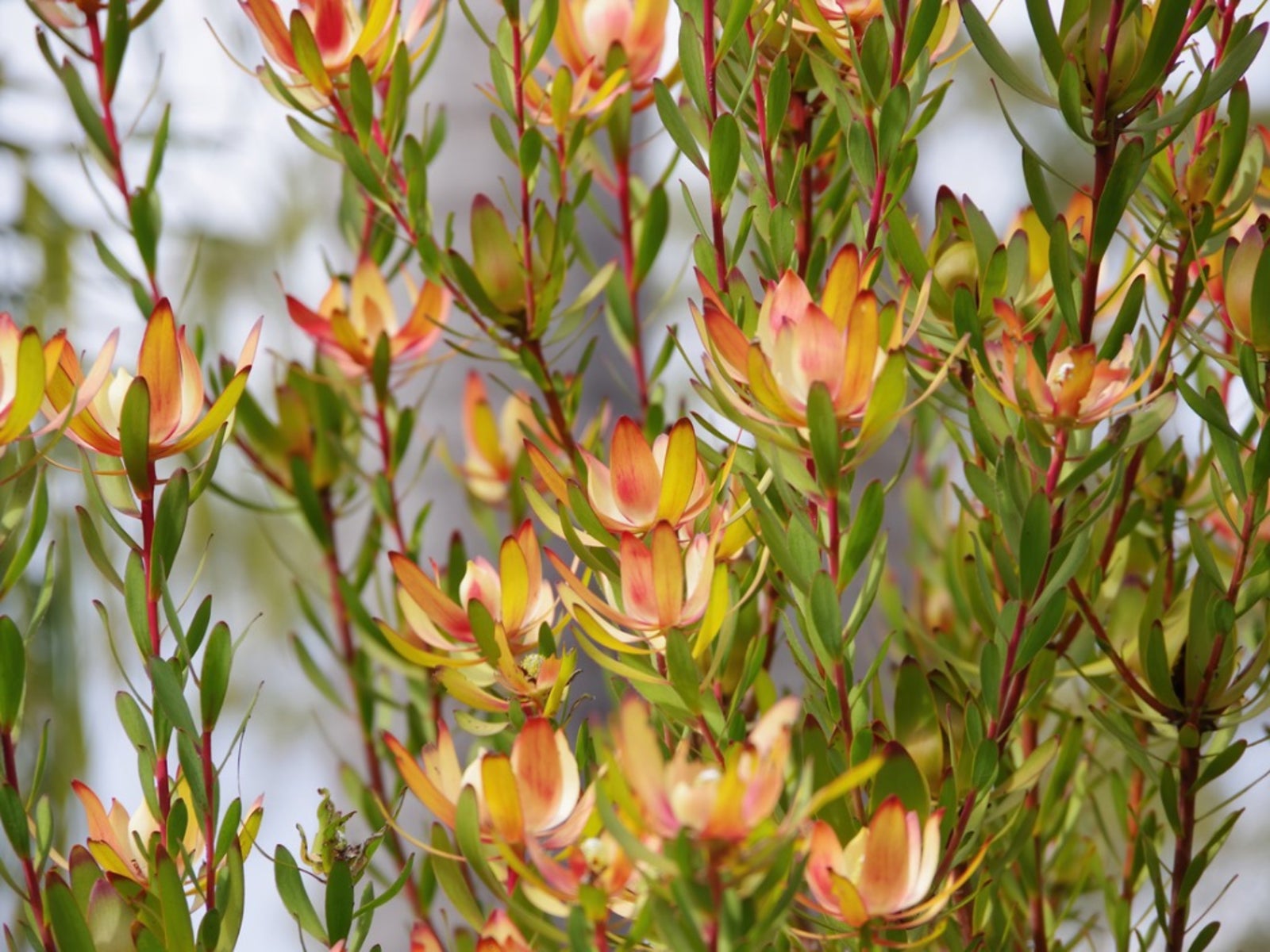Leucadendron Information – How To Grow A Leucadendron Plant


Leucadendrons are stunningly colorful plants native to South Africa but capable of growing around the world. They are known for their low-maintenance tendencies and bright colors, making them a great choice for hot weather and drought-prone gardens. Keep reading to learn more about Leucadendron care and how to grow a Leucadendron plant.
Leucadendron Information
Leucadendron plants are relatives of Protea plants. While more commonly known as a conebush, the plant’s Greek name is actually something of a misnomer. “Leukos” means white and “dendron” means tree, but while white Leucadendrons can be found, the plants are most popular for their vividly vibrant colors. Each stalk of the plant is topped with a large inflorescence-- the flower itself is relatively small, while the brightly colored “petals” are actually bracts or modified leaves. These inflorescences can sometimes reach 12 inches (31 cm.) in diameter. Leucadendron plants have a shrub-like growth habit and usually reach 4 to 6 feet (1-2 m.) tall and wide.
How to Grow a Leucadendron
Leucadendron care is not difficult, as long as your growing conditions are right. Leucadendrons are not cold hardy and are only suited to outdoor growing in USDA zones 9b through 10b. As long as conditions are warm enough, however, having Leucadendrons in the garden is very low maintenance. The plants are drought tolerant, and only need to be watered during particularly dry periods. Water deeply once per week instead of lightly every day. Try to keep the leaves from getting wet, and space them so that the leaves don’t touch any other plants. This should help prevent disease. Plant your Leucadendrons in a well-draining spot with full sun. The plants don’t need extra fertilizer, though they prefer slightly acidic soil. They can be pruned back very heavily. After blooming, you can cut back the woody material to just above a node. This should encourage new, bushier growth. If you live outside their hardiness area, it may be possible to grow Leucadendron in a container that can be overwintered indoors or simply treat the plant as an annual in the garden.
Gardening tips, videos, info and more delivered right to your inbox!
Sign up for the Gardening Know How newsletter today and receive a free copy of our e-book "How to Grow Delicious Tomatoes".

The only child of a horticulturist and an English teacher, Liz Baessler was destined to become a gardening editor. She has been with Gardening Know how since 2015, and a Senior Editor since 2020. She holds a BA in English from Brandeis University and an MA in English from the University of Geneva, Switzerland. After years of gardening in containers and community garden plots, she finally has a backyard of her own, which she is systematically filling with vegetables and flowers.
-
 Terrifically Tubular Flowers For Hummingbirds: 9 Tube-Flowered Plants To Attract Hummers
Terrifically Tubular Flowers For Hummingbirds: 9 Tube-Flowered Plants To Attract HummersGrowing tubular flowers for hummingbirds helps you create the optimum feeding conditions for your winged friends. Here are nine tubed delights for hummers
By Tonya Barnett
-
 How To Grow Hydroponic Tomatoes For Fresh Indoor Harvests – No Soil Required
How To Grow Hydroponic Tomatoes For Fresh Indoor Harvests – No Soil RequiredLearning how to grow tomatoes in water is easy and allows you to harvest fresh-home-grown produce in every season without any mess.
By Ellen Wells
-
 Pruning Leucadendrons – How To Prune A Leucadendron Plant
Pruning Leucadendrons – How To Prune A Leucadendron PlantLeucadendrons are fascinating and beautiful flowering plants, as long as you know how to care for them. Learn more about how and when to prune leucadendrons to get the most out of their flowering potential with the information found in this article.
By Liz Baessler
-
 Leucadendron In A Pot – Caring For Container Grown Leucadendrons
Leucadendron In A Pot – Caring For Container Grown LeucadendronsLeucadendrons include shrubs or small trees of various sizes, and many are perfect for growing in containers. Interested in learning how to grow leucadendrons in containers? Click on the article that follows to learn all about growing leucadendron in a pot.
By Mary H. Dyer